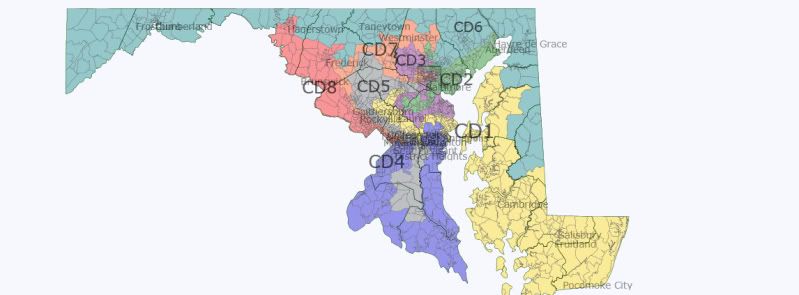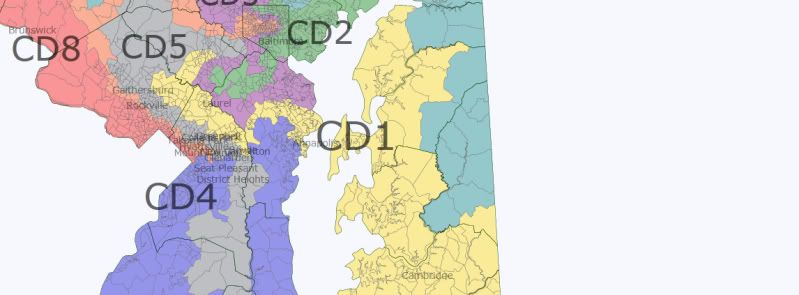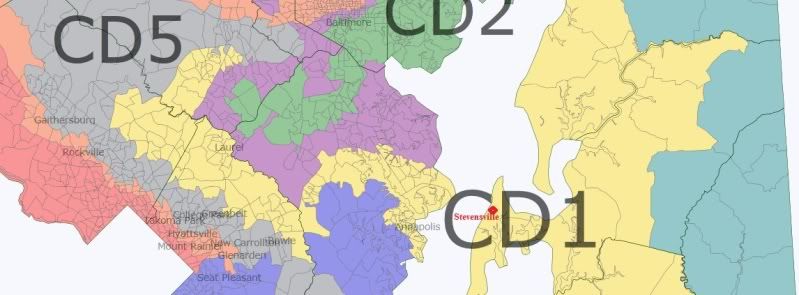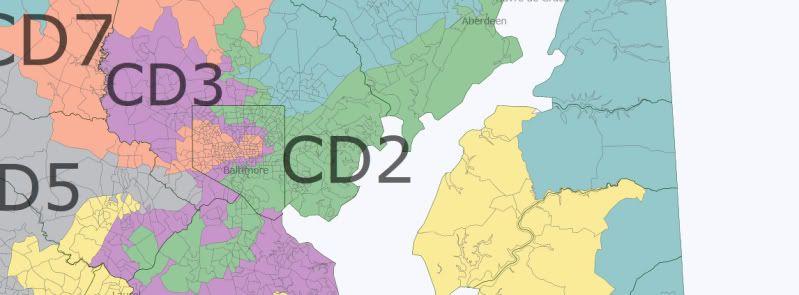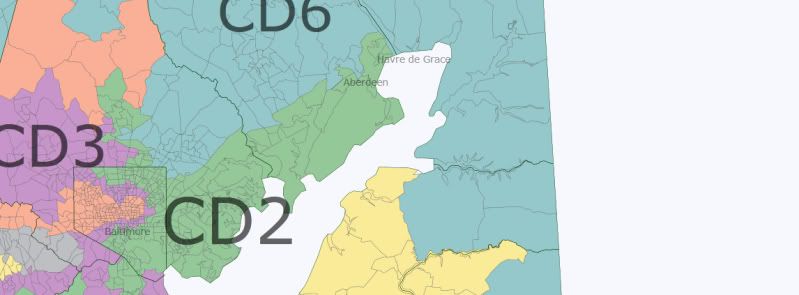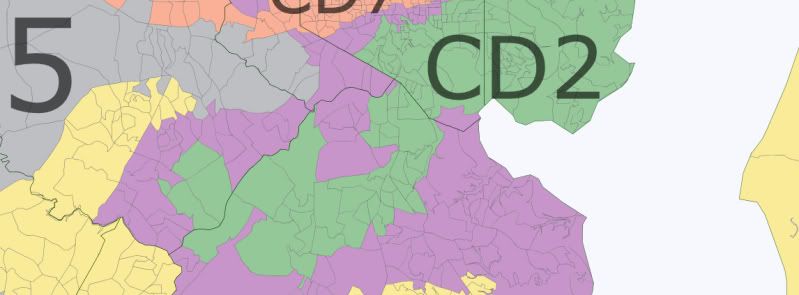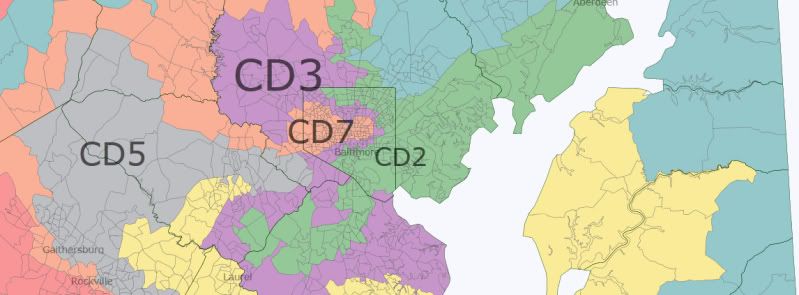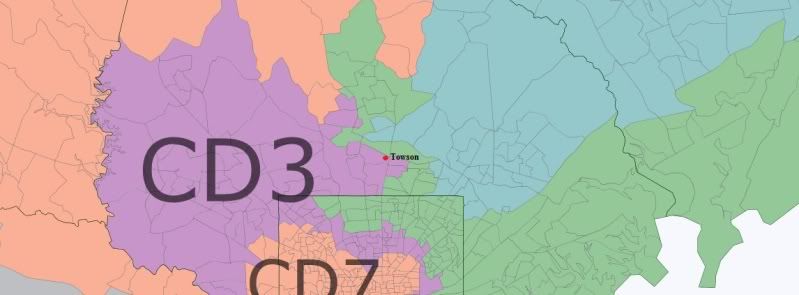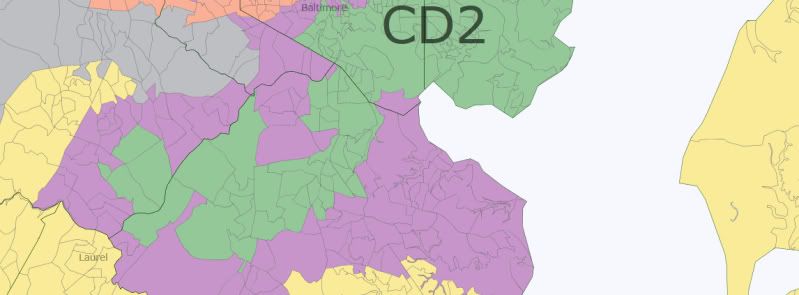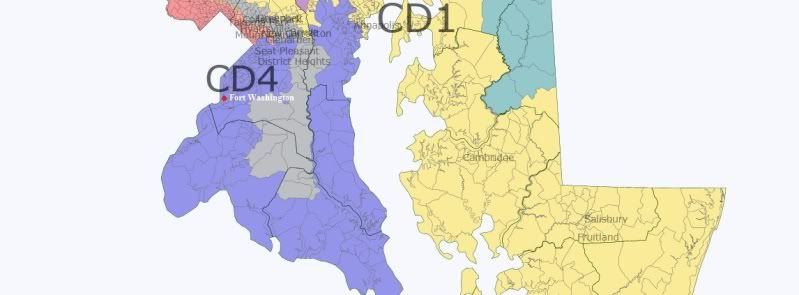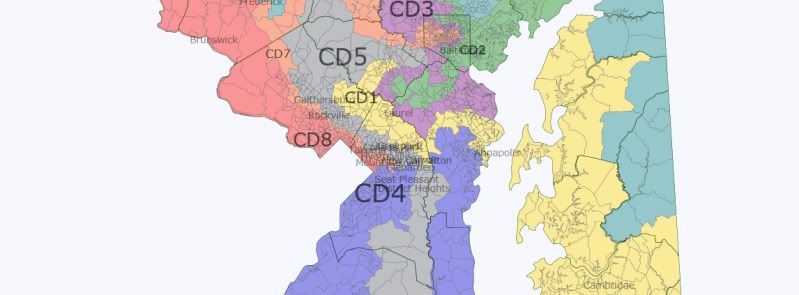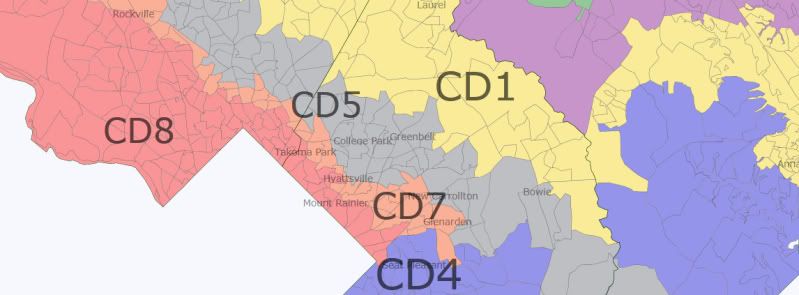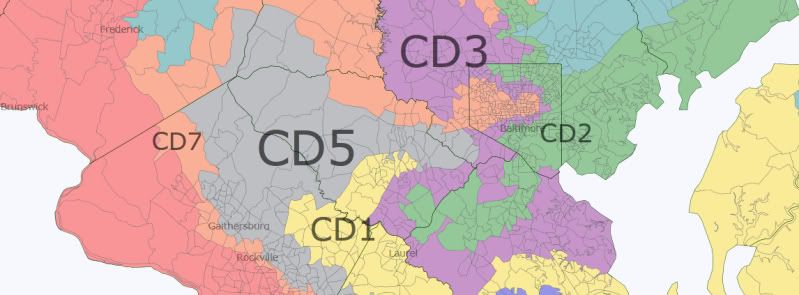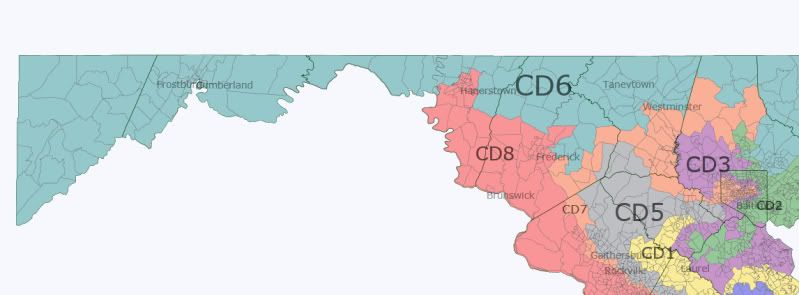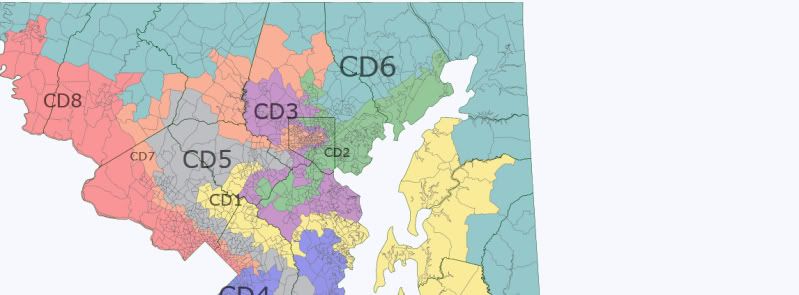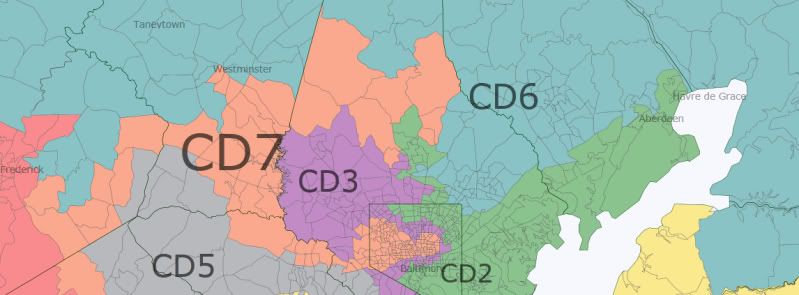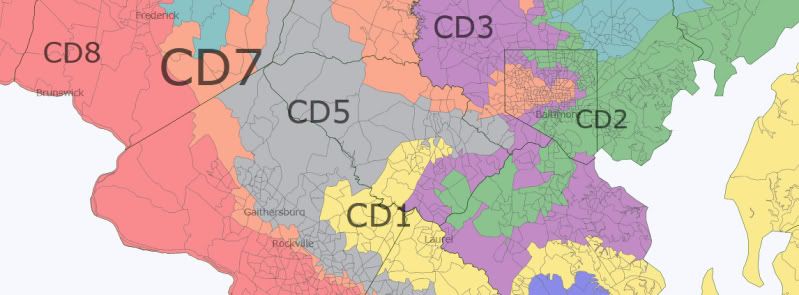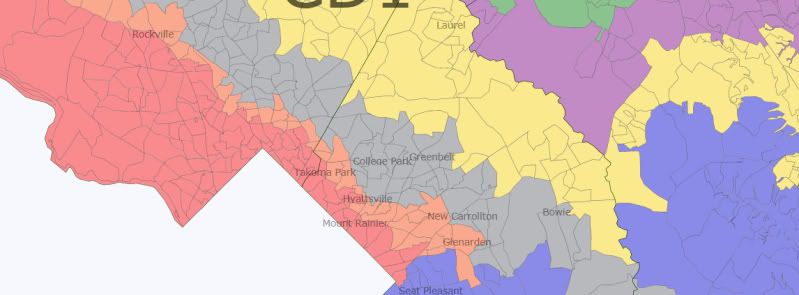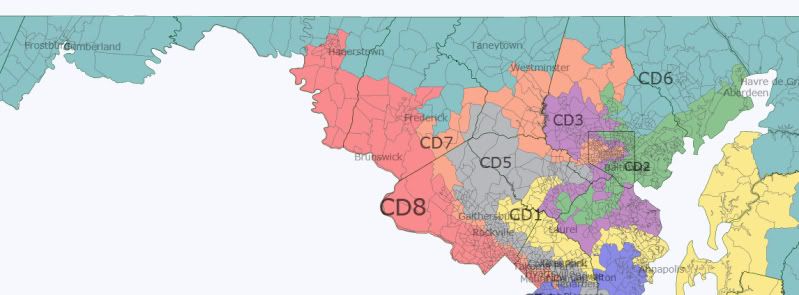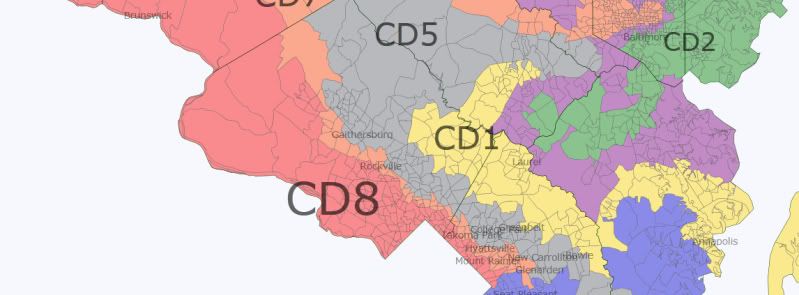The lack of political data is a bit of a drawback in coming up with these North Carolina maps, but I’ve drawn North Carolina a few times now. In my experience, it’s hard to draw a pretty map, and in fact, I think it keeps getting grosser and grosser the more I try.

The idea here was to draw a rather unfriendly 4-9 gerrymander for the Republicans. I think it came out largely successfully, though at least two of those GOP districts (and perhaps one Democratic district) may be prone to a bit of wobble. I’d call it a 4-8-1 overall.
NC-01 (blue)
Rep. G.K. Butterfield, the Democrat who represents this VRA district, has little to complain about. It’s not pretty, but it is 44.4% white, 46.7% black, and no Republicans will be interested in seriously challenging Butterfield out here. Safe Democratic.
NC-02 (green)
Hey, it’s an open seat. Well, maybe. This district gobbles up a lot of ruby-red central North Carolina, much of which is currently held by Republican Rep. Howard Coble in modern-day NC-06, one of the most Republican districts in the country. I’m not exactly sure where Coble resides in Greensboro, but most of Greensboro is in another district, so I think this is open. Rep. Renee Ellmers, the freshman Republican who claims this district today, is certainly drawn out. No matter who runs here, the Republican will win unless he or she is caught with a live boy or a dead girl, as the saying goes. Safe Republican.
NC-03 (purple)
Republican Rep. Walter B. Jones, Jr., gets more respect here than most Republican congressmen. He’s an ally of Rep. Ron Paul, the iconoclastic Texas Republican who kick-started the nascent libertarian uprising within the Republican Party back in 2007 and 2008 when he ran for president, then flatly refused to endorse the party’s nominee, Sen. John McCain, in favor of holding a rival event to the Republican National Convention across town. The quirky Jones should be happy with this district, which looks rather similar to his current turf. He benefits heavily from water continuity here, of course. Safe Republican.

NC-04 (red)
Yes. Here is where things get a bit twisted. Democratic Rep. David Price gets thrown into the blender together with current NC-13 Rep. Brad Miller, another Democrat, in this urban vote sink. A primary fight between Price and Miller, both of whom claim a very Democratic voting record and both of whom are members of the extremely endangered club of white Democratic congressmen from the South, could be the source of some yucky schadenfreude for delighted Republican spectators. Whoever is the Democratic nominee will hold this seat, guaranteed. Safe Democratic.
NC-05 (yellow)
This is where Coble goes out of his NC-06. It’s a combination of the northern parts of that district and the current NC-05. Republican Rep. Virginia Foxx, otherwise known as the Mean Granny, has been redistricted elsewhere, paying the price of living at the absolute extremity of her district. If the district absorbed swingy Winston-Salem, it might be more competitive, but in this configuration, Republicans won’t sweat it. Safe Republican.
NC-06 (teal)
Mean Granny actually ends up here, in the district that soaks up Winston-Salem. She has little reason to complain, though, as outside of some parts of the city, the district is eye-blisteringly red. Foxx is such a piece of work that it’d be nice to think a strong Democrat could take her out, but in this configuration, she or any other Republican who runs is basically secure starts out with a solid edge. Safe Likely Republican.
NC-07 (grey)
Somehow, Ellmers lands in this district, while current Democratic Rep. Mike McIntyre goes elsewhere. With all the grace of a drunken giraffe, this district lurches from Ellmers’s home of Dunn down to the South Carolina border, scooping up lots of ancestrally Democratic territory. McIntyre likely would have gotten the boot last year were he not matched up against accused murderer and former Goldman Sachs stooge Ilario Pantano, as demographic trends in this area have not smiled on the Democratic Party. I’d rate Ellmers the favorite, but she’s not exactly Albert Einstein herself, and a good Democratic recruit could give the party a chance at keeping this seat blue post-McIntyre. Lean Likely Republican.
NC-08 (slate blue)
McIntyre, of course, wound up here, in the district now represented in Congress by his fellow Blue Dog Democrat, Rep. Larry Kissell. There’s been some talk of McIntyre running against near-toxic Gov. Perdue for the Democratic nomination in next year’s gubernatorial election, and if he gets deathmatched against his buddy Kissell (as appears likely), the odds probably go up. This district is probably going to stay in the Democratic column thanks to Fayetteville and the potent incumbency of Kissell, but the PVI is going to be pretty close to EVEN and Republicans will probably still want to take a crack at flipping it. Likely Democratic.

NC-09 (cyan)
Rep. Sue Myrick, the longtime Republican congresswoman here, has kept a low profile on the national stage, but she’s well-connected and well-loved in suburban Charlotte. Her district has not changed too much at all, and she’s a lock for reelection if she runs. Safe Likely Republican.
NC-10 (magenta)
This district is the unlucky one charged with cracking the Democratic stronghold of Asheville, credited by some with keeping Rep. Heath Shuler, the Blue Dog Democrat representing NC-11, in Congress last year. Republican Rep. Patrick McHenry should be able to handle it, seeing as that most of the rest of his district remains the same (though it no longer stretches to the Tennessee border) and the modern-day incarnation is a dramatic R+17. Safe Republican.
NC-11 (chartreuse)
The man with the biggest target on his back in North Carolina redistricting this year, Shuler has been an irritant to the North Carolina Republican Party (as well as the national Democratic Party, but that’s another story) due to his apparent inability to lose despite occupying an intensely Republican district. But with about two-thirds of Asheville locked away in NC-10, this could be the end for Shuler. The thing is, I wouldn’t count the man out. Tossup/Tilt Republican.
NC-12 (cornflower blue)
I haven’t exactly made my loathing of Democratic Rep. Mel Watt, the congressman for Bank of America NC-12, a secret on this site. But he’s got a VRA district, albeit perhaps the most atrocious one in the country, and he’s not going anywhere. Republicans said they’d like to kill this grotesque district, which snakes from Charlotte up to Greensboro, but they also don’t want to get nerfed with a retrogression suit, because a court-drawn map of North Carolina would look a hell of a lot different than a Republican gerrymander. This district is 31.4% white, 47.6% black, and 14.2% Latino, which is about as strong a minority-majority district as can be drawn here. Safe Democratic.
NC-13 (salmon)
Despite its color, this district is not intended for every SSPer’s favorite authentic self-utilizing power along the lines of excellence, last seen launching a committee to explore just how many points he would lose by to independent Sen. Bernie Sanders of Vermont. With two pairs of Democratic congressmen deathmatched, this district must be North Carolina’s second open seat, and it’s a doozy. It’s basically an incomplete ring around the Research Triangle, joining together a bunch of white-collar suburbs and exurbs. It doesn’t exactly scream “recipe for Democratic strength”, but it’s an open seat, so it could be surprising. I’d bet strongly on a competent Republican candidate, though. Likely Republican Tossup.
UPDATE: roguemapper kindly calculated some political data (based on the 2008 election results) for the above map. This inspired me to get slightly more diabolical. If Republicans wanted to get very, very aggressive (and maybe a little bit spiteful), they could try a map like this:

I’d call this a 4-9, but I haven’t crunched the numbers yet. One of those Republican districts will belong to Rep. Heath “Captain Jack Harkness” Shuler, cursed with apparent political invulnerability, but there’s only so much you can do in redistricting.
NC-01 (blue)
No change from previous map. Safe Democratic.

NC-02 (green)
This district takes up a lot of swingy territory (helping to push a few marginal Republican seats deeper into the red) and tries to smother it with rural territory. It’s still an open seat, I believe. Democrats’ biggest foe here is its lack of geographic compactness; I don’t see a Durham-area Democrat running strongly in northern Cumberland County, for example, which would find a Blue Dog more palatable than Democrats from the Research Triangle would. Likely Republican.
NC-03 (purple)
No change here. Safe Republican.
NC-04 (red)
No change here. Safe Democratic.

NC-05 (yellow)
Scooping up more of Greensboro in exchange for some rural counties on the Virginia border will push the PVI of this district a point or two more Democratic, but it should remain a solid Republican district, especially with veteran Coble entrenched in the Greensboro area. Safe Republican.
NC-06 (teal)
No change here. Likely Republican.
NC-07 (grey)
No change here. Likely Republican.
NC-08 (slate blue)
One of the cruelest districts I’ve ever drawn, this minority-majority district basically screws both Kissell and McIntyre (who are both drawn into it) in the primary. That’s probably no benefit to Republicans, as Kissell and McIntyre are among the least loyal members of the Democratic caucus, but it fulfills the vendettas of the North Carolina Republican Party. Plus, if a black Democrat from Greensboro sneaks through in a primary, the consternation of ancestral Democrats happy enough to vote for Kissell and willing to begrudgingly pull the lever for President Obama in 2008 could give a moderate “good ol’ boy” Republican (including Kissell, if he switched parties) an opening. 45% white, 34.1% black, 8.2% Latino, 8.1% American Indian. Likely Democratic.

NC-09 (cyan)
Myrick gets a safer seat, with a lot of blueing Charlotte gobbled up by Watt and a lot of reddish territory incorporated into this district. Safe Republican.
NC-10 (magenta)
No change here. Safe Republican.
NC-11 (chartreuse)
No change here. Note that as before, the rating is only because Shuler is Shuler; in an unlikely open-seat scenario, it’s almost certain to flip. Tossup/Tilt Republican.
NC-12 (orange)
Yes, I changed the color. And the shape. Watt’s ugly snake-shaped district has been made more compact, and in turn, it has become much whiter. It remains minority-majority, but by a smaller margin, and it is white-plurality. 44.4% white, 35.6% black, 13.8% Latino. Safe Democratic.
NC-13 (salmon)
This district loses suburban Durham and Orange counties in exchange for exurban Chatham and Lee counties. This should be the district I meant to draw last time. Still an open seat. Likely Republican.















